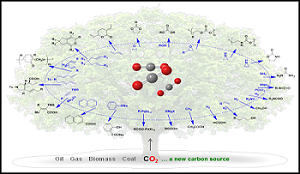
Thomas E Müller
RWTH Aachen University, Germany
Title: Catalysis and life-cycle-analysis of current and future industrial routes to CO2 utilization
Biography
Biography: Thomas E Müller
Abstract
The utilization of carbon dioxide (CO2) as an inexpensive and renewable C1 feedstock is of strategic importance for decreasing our dependence on fossil based raw materials (Ref. 1). In this context, the direct build-up of fuels, chemicals and polymers, at least partially, from CO2 is of particular interest. Various technologies are being discussed for implementation in the industry (Figure 1). The lecture will compare the current status of these technologies, the changes effected upon introducing CO2 as feedstock and evaluate the CO2 reduction potential based on the currently available life-cycle-analyses. One recently commercialized process that involves the direct use of carbon dioxide as a feedstock is the production of organic carbonates by reaction of CO2 with epoxides (Ref. 2-4). Indirect routes for CO2 utilization are of equal relevance. Formaldehyde, commercially attained by partial combustion of methanol that, in a future economy, may be obtained from CO2, is a promising feedstock. Thus, oligomeric poly (acetalester) is generated readily from formaldehyde. Such poly (acetalester) has intriguing properties rendering them inspiring compounds for fuel and polymer applications. Motivated by the goal of expanding the CO2 technologies to further application fields, it seems essential to unravel highly effective strategies for activating the carbon dioxide molecule. The energy needed to overcome the thermodynamically low energy level of CO2 is thereby a crucial factor. Only when the energy level of the resulting intermediates is appropriate, the subsequent reaction of the activated CO2 molecule with the co-reagents will take place. The right choice of the catalyst is thus the key to CO2 conversion and directs the reaction pathway to the desired target products. The lecture concludes with discussing some of the most intriguing approaches for activating CO2.

Figure.1: The utilization of carbon dioxide (CO2) as an inexpensive, renewable and abundant C1 feedstock is of strategic importance for decreasing our dependence on petroleum-derived raw materials.

